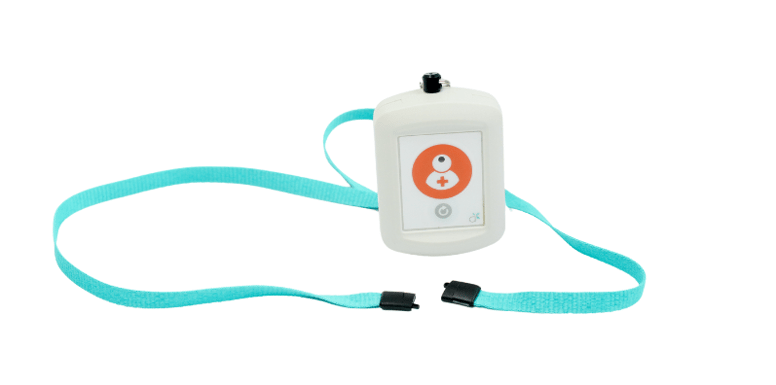
Below is a list of the terminology you may commonly hear within the care industry, with a short definition for each.
What is a nurse call system?
A nurse call system is a device that allows hospital patients or care home residents to call for assistance by pressing a button. Nurse call systems generally come in two different forms – hard-wired or wireless.
Traditionally, nurses receive calls either on pagers or team display panels but in recent years, a number of manufacturers have replaced pagers with mobile devices, which allows nurses to receive more information about the call – specific location, resident name etc.
What is a wired nurse call system?
Wired nurse call systems are literally wired into the fabric of a care home or hospital. They rely on a series of electric cables to connect the various components and accessories of the system. The main benefit of wired nurse call systems is reliability and cost. However, there are some significant drawbacks, such as the disruption caused when replacing this type of equipment and relative inflexibility.
What is a wireless nurse call system?
Wireless nurse call systems rely on wireless connectivity to transmit calls and pass communication and information between its accessories and components. Typically, wireless nurse call systems rely on radio communication but in recent years, digital systems that exploit WiFi signals have come to market.
Wireless nurse call systems represent the more modern end of the nurse call market and have some significant benefits over wired systems. For example, installing wireless nurse call systems is a lot quicker and therefore, less disruptive than its wired counterpart. physical cables to connect accessories and components.
What is a CQC Inspection?
A CQC inspection is an inspection carried out by the Care Quality Commission to gauge how effective a service is. There are 5 Key Lines of Enquiry used by the CQC for every inspection: are they Safe? Are they Effective? Are they caring? Are they responsive to people’s needs? Are they Well-Led? Each of these key lines of enquiry is judged on a scale of Inadequate to Outstanding, with the overall rating of the service based on the outcome of these judgements.
What is CQC Outstanding?
An Outstanding rating awarded by Care Quality Commission (CQC) is the best rating a service can achieve. The rating is based on five key lines of enquiry - are they Safe? Are they Effective? Are they caring? Are they responsive to people’s needs? Are they Well-Led? Each of these KLOEs is judged on an individual basis, with the overall rating of the service being based on the outcome.
An outstanding rating is the ultimate goal of every care and medical service.
What is Person Centred Care?
Person Centred Care is an approach to caring that focuses on the needs and wants of the individual rather than their ailment or disability. Person-centred care empowers care residents or patients to take an active role in shaping their own care and managing their own care and managing their own health and well-being.
Care is often delivered in a task-orientated way, influenced by care plans and other tools that don’t lend themselves to the person-centred approach. This has led to a strong desire to look for tools and technology that help to move services away from task-orientated care towards a more person-centred approach.
What is care data?
Care data is any data gathered about the care delivered either to an individual or to the collective in a caring environment. Care data is often collected to allow management to gauge how effectively care is being delivered in their service, who is delivering the care and which residents require what amount of care. Having access to this type of data empowers care leaders to make decisions to better shape the care being delivered, or to identify where issues may be arising.
Care data can also be shared with CQC during inspections, to provide evidence of care delivered or to provide proof and protection in safeguarding scenarios.
What is care home software?
Care home software refers to any type of software utilised in adult social care environments. The most common types of care home software are used in the creation and population of digital care records and digital care plans. The care industry has traditionally relied heavily on paper records, but digital transformation is a growing trend and homes are increasingly relying on care software to simplify and streamline their processes.
What is digital transformation in care?
Digital transformation refers to the movement from analogue processes and technology to digital. When we talk about digital transformation in care, we are generally talking about replacing paper records and documents with digital systems. There are considered to be two key stages in care-related digital transformation:
1. Using digital technology to do the things once done manually and
2. Using digital technology to improve/enhance the provision of care.
What is care home technology?
The term ‘care home technology’ refers to any piece of technical equipment used within a care home environment. Usually, when referring to care home technology we are not talking about computers, but more specialist equipment like nurse call systems, medication dispensing machines, automated care evidencing platforms, dedicated care home software that streamlines processes etc.
With the increasing movement towards digital transformation in the care sector and increasing support from CQC for technology in care services, care home technology is becoming more and more advanced and commonplace.

Mar 1, 2021 12:14:00 PM




Comments